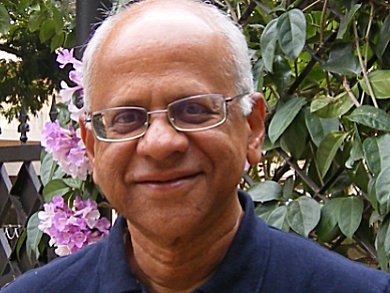National Workshop on Crystallography Education 2014
|
There have been many efforts during IYCr to spread the message of crystallography in various countries where scientific activity is not as well developed or as well organized as elsewhere. Typically this has been done through the OpenLabs and Summits. In very large and diverse countries like India, however, there are regions within the same country where scientific activity is far less well developed than elsewhere in the country. One of these regions is in the North Eastern corner of India which consists of the states of Arunachal Pradesh, Assam, Manipur, Meghalaya, Mizoram, Nagaland and Tripura. This region is geographically far removed from the rest of the country and it is also culturally and linguistically distinct. Indeed, there are many links between this region and the neighbouring countries of South East Asia like Myanmar, Cambodia and Laos. Accordingly, Dr. Ranjit Thakuria and others in Gauhati University, Assam, have organized a workshop in crystallography for teachers and students. It is a matter of satisfaction for the Indian crystallographic community that more than 200 participants came to this meeting because it should be noted that in many of these cases even travel within the region could be non-routine. The attached report by Dr. Thakuria will give the reader an idea about the symposium itself.  Gautam R. Desiraju |
A National Workshop on Crystallography Education sponsored by the International Union of Crystallography (IUCr) and Department of Biotechnology (DBT-Northeast) was organised at Gauhati University on November 8, 2014. Prof. Gautam R. Desiraju (Former IUCr President and IISc, Bangalore) took the initiative by encouraging us to organize an event specifically in the North-East region of India where the field of crystallography has not developed so far compared to the rest of the country. The purpose of organizing this workshop was to celebrate the centenary year of X-ray crystallography and popularize the subject among the students and young researchers as part of IYCr activities. The organizing committee invited a few distinguished speakers such as Prof. Alok K. Mukherjee (Jadavpur University), Prof. Ashwini Nangia (former Associate Editor of Cryst. Growth Des., University of Hyderabad), Prof. Pinak Chakrabarti (Bose Institute), Prof. Jubaraj B. Baruah (IIT Guwahati), Dr. C. Malla Reddy (IISER Kolkata) and Dr. Bipul Sarma (Tezpur Central University) along with about 250 participants including faculty members, young researchers and masters students from various institutions in the North-East region. The one-day workshop started with the inaugural lecture by the Honourable Vice Chancellor of Gauhati University. Prof. Mukherjee initiated the scientific meeting with a brief overview of X-ray crystallography starting from the discovery of X-rays, principle of X-ray diffraction to the modern day single crystal and powder X-ray diffraction techniques. Prof. Nangia discussed about the patent landscape in India related to polymorphs and salts of Active Pharmaceutical Ingredients (APIs), the definition of Section 3(d) of the Indian Patents Act as well as its implications in recent polymorph cases including the Supreme Court verdict on alpha and beta polymorphs of cancer drug Gleevec (Imatinib mesylate). Dr. C. Malla Reddy discussed about mechanical flexibility of organic single crystals based on their structural aspects. During the presentation he illustrated a few case studies with video graph how crystals behave (e.g. bending, jumping or explosion) under mechanical and thermal stimuli. Tuning crystal properties, such as mechanical flexibility, mechanochromic luminescence, pharmaceutical tabletability by controlling molecular packing and spatial distribution of noncovalent interactions and their correlation using the crystal engineering approach was covered in the discussion. The post-lunch session began with a talk by Prof. Pinak Chakrabarti. During his hour-long presentation, he discussed about the journey of X-ray crystallography starting from the discovery of X-ray by Roentgen to the recent Nobel Prize on structural and functional study of ribosome. He also mentioned about the International Year of Crystallography (IYCr2014) and various events (scientific, cultural, educational) as part of the celebrations. Prof. Jubaraj B. Baruah presented a few examples of designed ligands and their metal complexes with various metal salts from his research group. He also illustrated how change in ancillary ligands and solvents can modify the dimensionality of metal coordination polymers leading to encapsulation of cations, the role of ancillary ligands in formation of co-crystals of inorganic complexes, etc. In the concluding lecture by Prof. Mukherjee, he mentioned about the difficulties in structure determination from powder X-ray diffraction (PXRD), the sequential steps involved in powder structure solution and about the Rietveld refinement techniques. During the interactive session with the students he showed few case studies from his own research group how crystal structures of conformationally flexible and rigid molecules can be solved from the corresponding powder pattern.
The workshop was jointly organized by the Department of Chemistry and Sophisticated Analytical Instrument Facility (SAIF) of Gauhati University. Given the large student participation, the young researchers greatly benefited by knowing about new developments and opportunities. The efforts of the organizing committee were greatly appreciated by all. Ranjit ThakuriaDepartment of Chemistry, Gauhati University, Guwahati 781 014, Assam, India |




